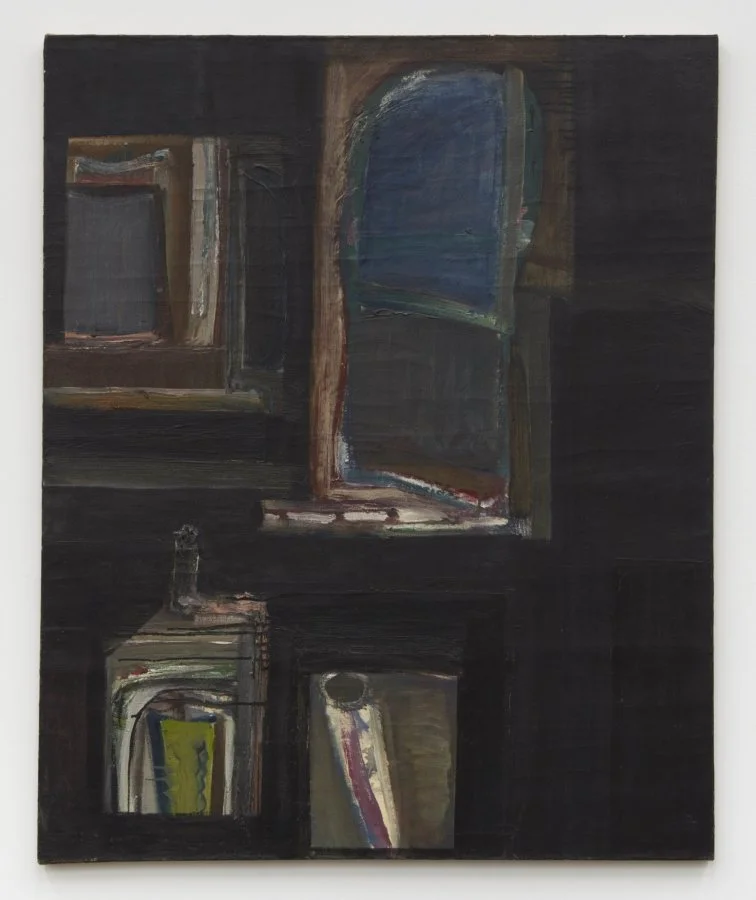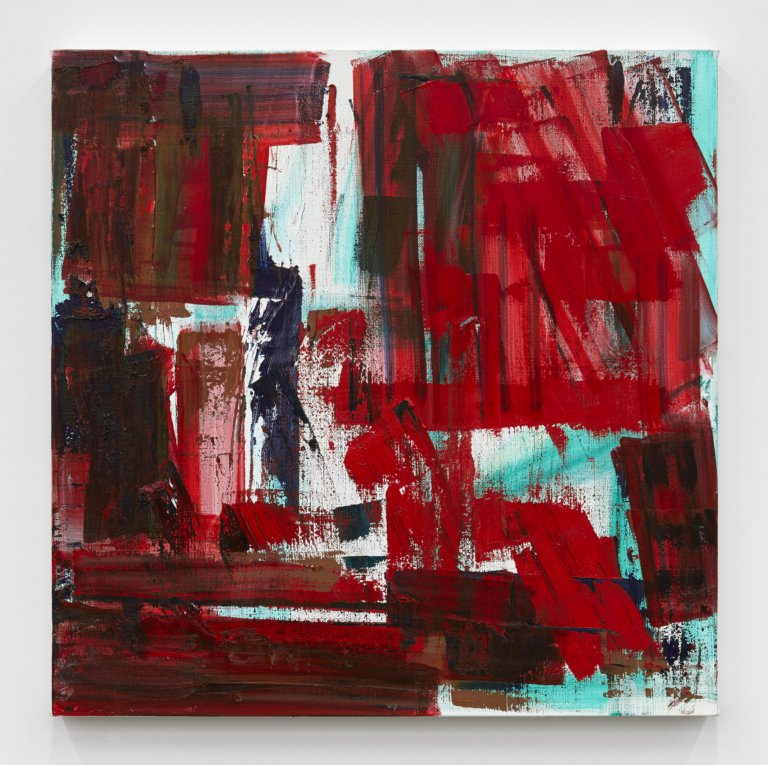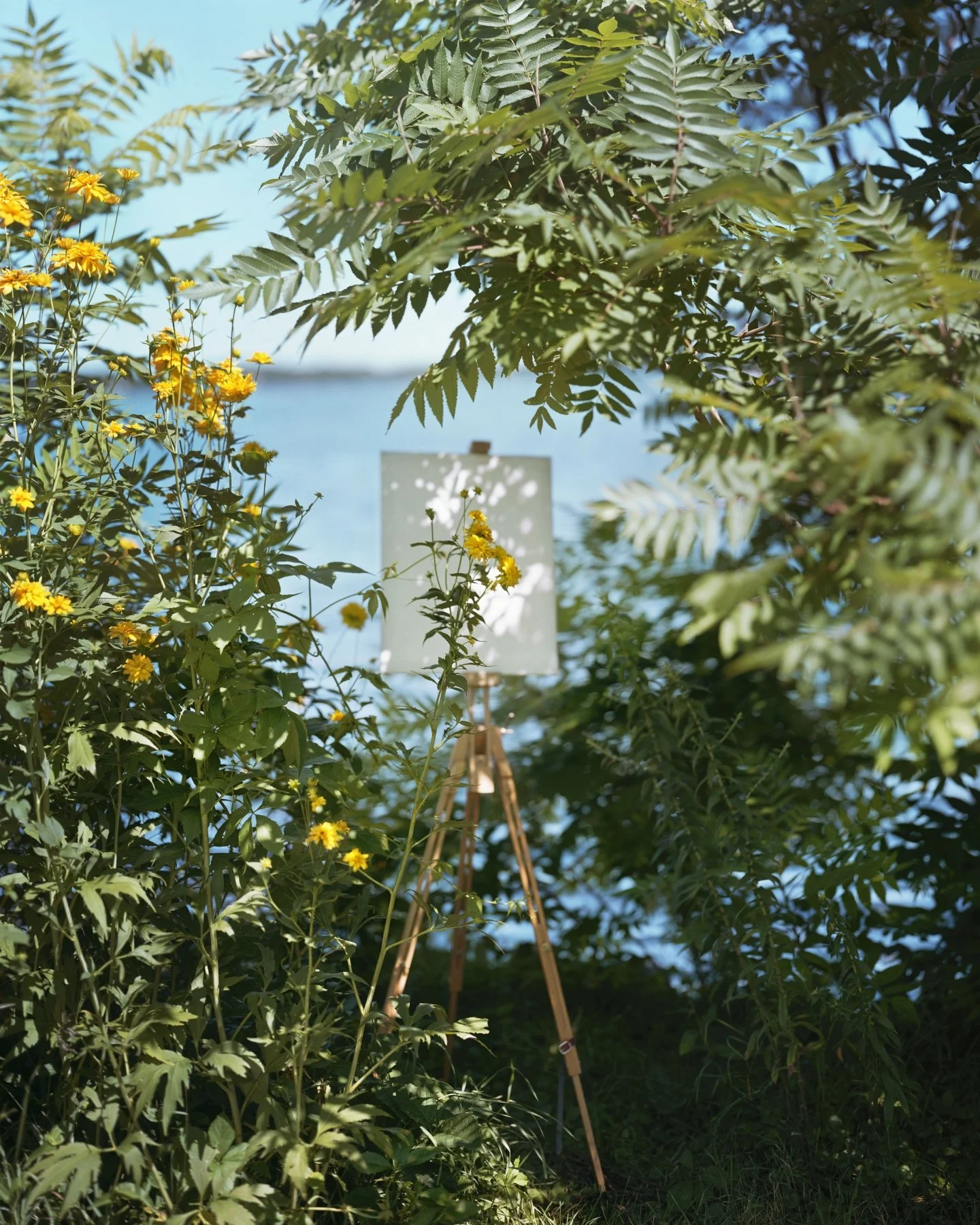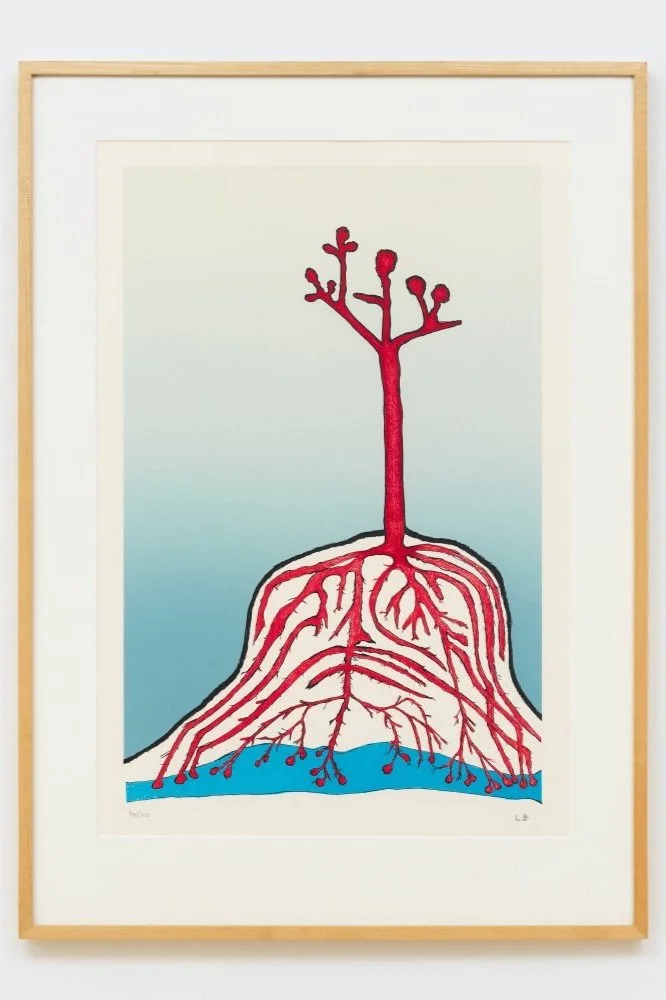Louise Fishman
“1960s: Darkness and Light”
New York, 22 East 2nd Street
Widely known for her gestural markmaking and atmospheric spaces, Fishman’s paintings from 1962 and 1963 showcase some of the artist’s earliest forays into abstraction, beginning with her first abstract painting in 1961. Drawn to nonrepresentational art, Fishman “felt that Abstract Expressionist work was an appropriate language for me as a queer. It was a hidden language, on the radical fringe, a language appropriate to being separate.”
Allegro Ma Non Troppo, 2020, oil on linen, 30 × 30 inches; 76.2 × 76.2 cm
The nine works on display were finished between Fishman’s last year at Temple University’s Tyler School of Art in Philadelphia and her first year of graduate school at University of Illinois Urbana-Champaign. They are imbued with the passionate gestures that in the coming years would unfurl into the saturated grid compositions for which she would become widely known. These paintings register the academic sensibilities of Fishman’s surroundings at the time: glass bottles, set tables, and other figurative elements ubiquitous to still lives and art school morph into nascent abstract formations. She often referenced the professors she held dear throughout her formal training, such as Herman Gundersheimer, an art historian and prior director of the Jewish Museum in Berlin.
Skagerrak, 2020, oil on linen, 40 × 30 inches; 101.6 × 76.2 cm
After a gap year, Fishman graduated from Tyler with a dual degree in art and education, encouraged by her father to obtain a practical certification. During these early years, her identity as a woman in the arts was particularly influenced by her proximity to two professionally active female painters: her mother and her aunt. Fishman would later note that she was “most influenced by their determination and love of painting more than by any particular style.” The works in 1960s: Darkness and Light were created under formative conditions, when Fishman was learning about herself as an artist as well as first encountering the professional expectations and limitations that she confronted for the rest of her career. In these early works, Fishman departs from the world of recognizable forms, often cloaking her compositions with black and burgundy to throw focus onto the more abstract elements.
Fishman’s early defiance against the painterly norms of her academic setting contains the same energy that she would carry throughout her practice: a breaking with convention that was informed by her identities as a woman, a lesbian, a feminist, and lifelong student of painting. Here, for the first time, the foundations that Fishman laid can be seen and felt—a home built from abstraction, according to the requirements that she alone set for herself.








